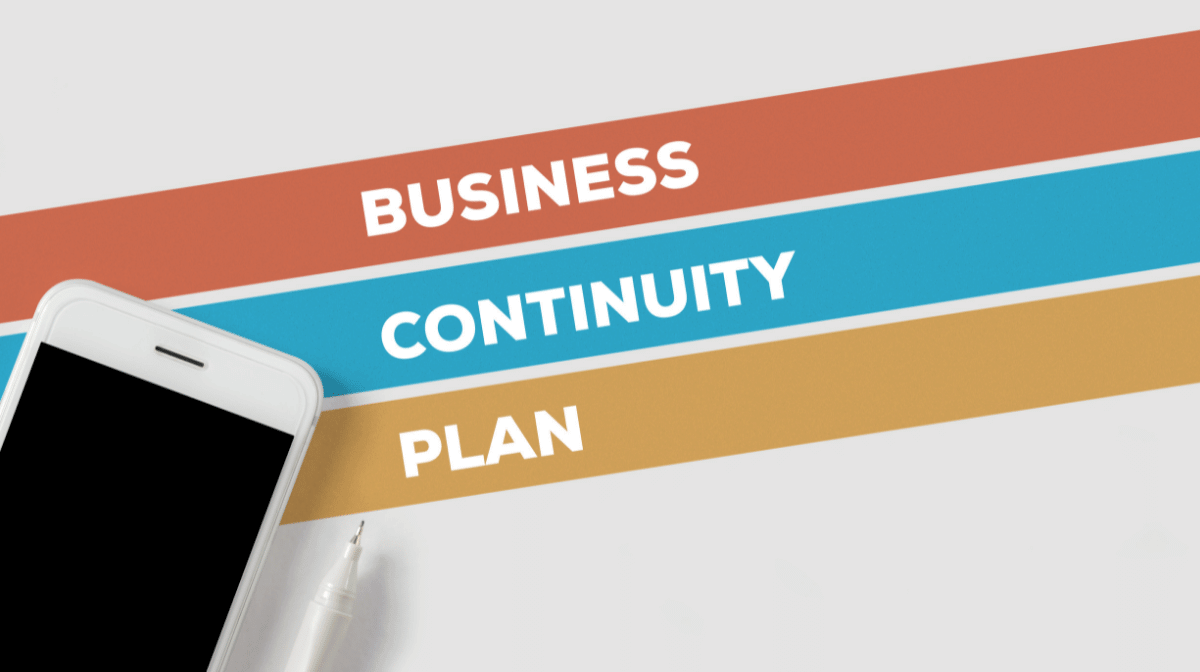Why Do I Need a Business Continuity Plan?
Life can be unpredictable. At a moment’s notice, the way you do business can change drastically. Whether it be a fire, natural disaster or some other incident affecting the way you work, you never know when you’ll need to spring into action to get things up and running.
The way to most efficiently do this is to have a business continuity plan (BCP) in place. Just as a disclaimer: this is an incredibly detailed topic. This article will provide a high-level overview to get you started and fill you in on some of the most essential pieces of your business continuity plan.
What is a Business Continuity Plan?
A business continuity plan outlines the actions and resources you need to continue doing business if something disrupts normal operations.
Why do you need one?
You need a business continuity plan because you can’t afford to have your business stop working for a significant period of time.
The survivable downtime will be different for every business. Some may be able to get through a day, or even a week, but certain companies can’t afford to lose operation for more than a few hours.
A BCP helps you continue operating in the event of an emergency and makes sure everyone in your organization knows what to do to continue operations during the outage. If you’re in one of these situations, you’ve already lost time and money. You can help limit that time and money lost by identifying your Recovery Time Objective (RTO) and a Recovery Point Objective (RPO).
What is a Recovery Time Objective?
A Recovery Time Objective is how long it should take for you to restore regular business operations after an outage.
Your RTO will depend on how long your business can withstand downtime. When you’ve identified your RTO, you’ll need to make sure it is feasible with your restoration budget and processes.
What is Recovery Point Objective?
A Recovery Point Objective is the point in time to which you will restore your data in the event of a disruption.
Each organization’s RPO will be different because it depends on how much data you can lose, how much work you can afford to duplicate and how frequently your critical business data changes.
Once you know your RPO, take a look at how often your organization is backing up data and if that storage space is enough to restore to an acceptable RPO.
RTO and RPO are Critical to Your Business Continuity Plan
These goals and objectives are crucial to your BCP as they will provide the benchmark for how and when you might need to spring into action. The time spent organizing and planning is done on the front end, so you can limit the chaos later.
Michael DePalma, VP of Business Development for Datto, says that businesses need to be resilient in the face of cyber-attacks and downtime.
“Downtime carries the biggest impact,” Michael said. “Businesses really need to rethink their backup plan and ensure they can maintain continuity of operations.”
Key Factors When Building Process
When you start to build out what your BCP will look like, there are a few big things to keep in mind and plan for. You’re going to be doing a lot of analyzing of your business. These are some key identifiers to help you build your process.
Identify Key Business Processes
The first thing you need to know is what your business needs to succeed. What are the most important processes? This might sound like a simple question, but it’s a crucial one.
Look at your day-to-day operations and identify these key factors that make things work, and that your business couldn’t live without.
What these processes really boil down to is your customers and money. Figure out what needs to function so that your customers are happy and identify which processes allow you to keep making money.
Once you’ve nailed down those main factors, you need to identify what could impede them.
How Long Will it Take to Restore?
So, you know what it takes to keep your business running and what could impede those processes. Now it’s time to quantify it. How much would it cost to restore these processes? How many hours will it take?
You also need to identify any gaps there might be. What does your company already have in place that will help you get back on track, and what do you still need to make that happen?
The building of this process will vary from business to business, but some parts will be constant across the board. Two things most all organizations will need are data backup and alternative facilities.
Here at Innovative, our employees can work from home if they’re unable to access the building. This won’t be the case for every organization, however. If you need an alternate site, it’s important to identify it and make sure it’s available when you need it.
Datto Business Continuity Solutions
When it comes to backing up data, Innovative recommends Datto’s Unified Continuity solutions. Datto is more than just a backup solution; they’re a business continuity solution. Datto offers data backup for everything from servers and PCs to cloud services and applications.
In addition backup functions, Datto’s continuity solutions allow you to operate from their cloud or, depending on the solution, from the local backup device. That means you don’t have to wait on new hardware to resume business operations.
While Innovative uses Datto as our own business continuity solution, and recommends it to most of our clients, we know it won’t be a fit for every single business. When choosing your data backup solution, it’s important to remember that it’s not enough just to back up your data.
Your business needs to be able to operate from your data backup. If your backup solution is going to be part of your BCP, it needs to be tested and operational within your RTO and RPO.
Communicating your Plan
When you select your recovery strategies, an important next step is communicating those strategies to your employees.
A great way to do this is by sending out a written document to everyone in your organization. There’s a lot of info this document should include.
Every employee should know their role and responsibilities. It’s like watching your favorite football team play. The team looks a lot better when everyone is on the same page. You don’t want your quarterback throwing an interception because the receiver ran in the wrong direction.
Those employee roles fall within a chain of command, which should also be communicated to everyone. While knowing your role is important, it’s also good to know what those in your area are doing. This leads to better organization and accountability.
Depending on the type of incident you’re preparing for, you might need outside assistance. This could be another business or some governmental entity. Part of the written document should include the contact info for these groups.
Testing Your Plan
Once you’ve communicated this to your employees, the next step is to test them. You need to know if these strategies work.
When testing your plan, you want to make sure you test all the people and processes involved. The details here become critical. No good team has ever succeeded without good practice.
While you’ll want these tests to be as close as possible to the real thing, we all know it’s impossible to replicate some of these scenarios. The main rule of thumb for these tests is to get it close without impacting regular business operations.
You’ll also want to test several possible scenarios because you never know what type of event could impact your business. As mentioned above, life is unpredictable. It’s important to be prepared for as many scenarios as possible.
After testing your plan, you’ll want to document and evaluate all the outcomes. If you see any holes or weaknesses in your plan, go back and adjust things. This is the reason we practice them first. We want to get them as close to perfect as possible.
Better to Prepare Now than Panic Later
This article is just a broad overview of the business continuity planning process. This is a long, detailed process, but it’s an important one. We’re all super busy, so it might seem daunting to take on this task. The main thing to remember, though is that this is an investment.
Not only is it an investment of your time, but also your money.
Putting in the work on the front end is essential. Doing so will help save your business. We never want tragedy to strike, but the sad truth is that it could happen at any moment.




